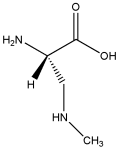By Roberta Attanasio, IEAM Blog Editor
One of the main previsions of climate science is an , which may easily cause flooding and challenge water management. The phenomenon finds its basis in the magnified evaporation caused by warming, resulting in the swelling of water vapor in the atmosphere. In this situation, when it rains, it rains a lot, as there is more vapor available to come down as rainwater. Rainwater may fall not only in large amounts but also in short, localized bursts, too quickly for the ground to absorb it. Sadly, these climate science forecasts are coming true. Although the relationship between global warming and increased precipitation is complex, there are no doubts about the marked increase in intense rainfall events, resulting in severe flooding throughout the United States and globally.

Flooding in Port Arthur, Texas, USA, after Hurricane Harvey (photo taken 31 Aug 2017). Credit: , .

